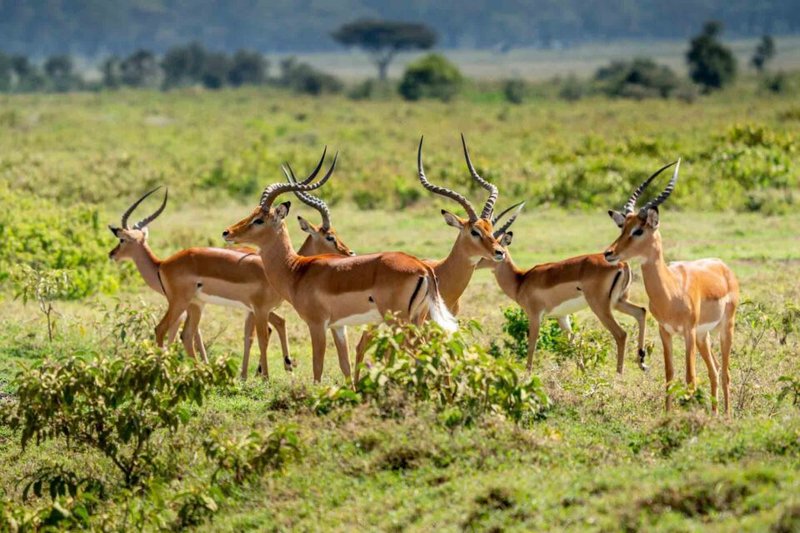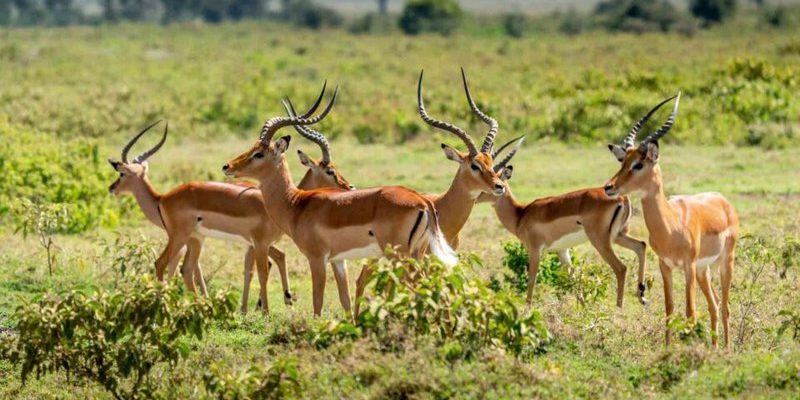
So, where do impalas really call home? Well, they thrive primarily in savannas, woodlands, and grasslands. Just like how people gravitate toward places that suit their lifestyles—think of cozy homes in friendly neighborhoods—impalas seek environments that provide food, water, and shelter. In this article, we’ll dive into their natural habitats, distribution, and why these factors matter for their survival.
Impalas’ Preferred Habitat
When it comes to choosing a home, impalas are pretty picky. They prefer open habitats where they can easily spot predators and find their favorite snacks. Typically, they’ll be found in savannas rich with grasslands and scattered trees. These settings provide both safety and abundant food sources.
The presence of grasses is crucial, as it forms a significant part of their diet. Impalas are grazers, meaning they enjoy munching on soft grasses and leafy shrubs. So, grassy plains, mixed with some taller trees for shade, make the perfect combo. It’s like having a backyard barbecue in your favorite park—easy access to food and plenty of room to roam.
Another essential factor in their habitat is access to water. Impalas need to drink daily, especially in hot climates. You won’t find them wandering too far from rivers, lakes, or even watering holes. That’s their version of a local café—where they can chill, hydrate, and socialize with others.
Geographical Distribution of Impalas
Now that we’ve covered what kind of homes they like, let’s talk about where you can find impalas. These incredible creatures predominantly roam throughout sub-Saharan Africa. From the grassy plains of Kenya to the open woodlands of Botswana, their range is quite broad.
The largest populations of impalas are found in East Africa, specifically in countries like Tanzania and Kenya, which have vast savannas that cater perfectly to their needs. You might even spot them in national parks such as the Masai Mara or the Serengeti, where they play a vital role in the local ecosystem.
In southern Africa, their distribution extends to South Africa, Namibia, and Zimbabwe. Here, impalas are often seen in reserves and parks, coexisting with other wildlife. Imagine a neighborhood block party with elephants, zebras, and lions—all sharing the same space but respecting each other’s territories.
Adaptations for Survival
Impalas have some amazing adaptations that help them thrive in their habitats. One of the most notable features is their exceptional speed and agility. When faced with predators, they can leap up to 10 feet high and run at speeds of over 50 miles per hour. That’s like having a built-in escape plan!
Their keen eyesight also plays a significant role in their survival. Impalas have large, expressive eyes, allowing them to spot dangers from a distance. They tend to graze in groups, which helps them keep an eye out for each other. It’s like having a group chat to alert friends about potential threats!
Additionally, they have adapted to be quite social animals. Living in herds provides safety in numbers, allowing them to alert each other to predators and share resources. This social structure is vital for their survival, and it brings a unique dynamic to their daily lives.
Impact of Habitat Loss
Despite their adaptability, impalas face challenges due to habitat loss. As human populations grow, more land is converted for agriculture, urban development, and infrastructure. This encroachment limits their natural environments, forcing them into smaller areas.
When their habitat shrinks, so do their food sources. It’s like trying to live in a city where your favorite grocery store keeps closing down—eventually, it gets tough to find what you need. Impalas may struggle to find the grasses and shrubs they rely on, which can lead to decreased populations over time.
Conservation efforts are crucial to protect these habitats and ensure that impalas can flourish for generations to come. Many wildlife reserves and national parks are established to provide a safe haven for these animals, helping to maintain their populations in the wild.
Role in the Ecosystem
Impalas play a significant role in their ecosystem, acting as both prey and grazers. As they munch on grasses and shrubs, they help maintain the health of their habitat. By keeping vegetation in check, they prevent overgrowth, which can lead to fires or habitat degradation.
Moreover, as prey for larger predators like lions and leopards, impalas are essential to the food chain. They support the health of predator populations, which in turn helps balance the entire ecosystem. Think of them as the perfect middlemen, holding everything together and ensuring that nature stays in harmony.
By understanding where impalas live and why they matter, we can better appreciate the delicate balance of their environment and the importance of conserving these magnificent animals.
Engaging with Wildlife: Eco-Tourism
For those who love nature, observing impalas in their natural habitats can be an unforgettable experience. Eco-tourism plays a vital role in promoting awareness and generating funds for conservation efforts. Visiting national parks not only allows you to witness these beautiful creatures but also supports local communities and wildlife preservation projects.
Many parks offer guided tours where you can learn about impalas and their habitats. These experiences often include a chance to see other wildlife, giving a broader picture of the ecosystem. It’s kind of like getting a backstage pass to nature, where you can learn and appreciate the importance of every animal—big and small.
By engaging in responsible tourism, we can contribute to protecting these environments. Remember, every visit helps support conservation initiatives that keep impalas and their habitats thriving.
In summary, impalas are remarkable animals that thrive in specific habitats across sub-Saharan Africa. Their preferences for open savannas, mixed grasslands, and proximity to water sources shape their distribution and survival. Through their unique adaptations, they manage to evade predators and maintain crucial roles in the ecosystem.
However, with habitat loss impacting their numbers, conservation efforts are more important than ever. By understanding where impalas live and the challenges they face, we can support initiatives that protect these stunning creatures. So next time you think about these graceful antelopes, remember their journey and the beautiful homes they call their own. Together, we can help ensure that impalas continue to leap across the African landscape for years to come.

